30 years of 5.0L V8 Falcons












































.jpg)
.jpg)





|

|

|

|

|

|

|

|

|

|

|

|

|

|

|

|

|

|

|

|

|

|
.jpg)
|

|

|
After killing the V8 engine in 1982, Ford Australia re-introduced it in 1991. More than just a new engine, the fuel-injected 5.0-litre V8 established the Falcon XR8, resurrected the Falcon GT and lit the wick on the Holden vs Ford fireworks that lasted for 25 years
It’s the 1970s. A generation of Aussie kids is growing up fighting each other across the back seat of their dad’s Falcon V8 wagon. The Falcon GT is Bathurst-winning road royalty. The 1979 movie Mad Max is set – as the opening credits tell us – ‘a few years from now…’ and immortalises the Falcon V8 – and sadly predicts the future – with police mechanic Barry’s line: "Sh-she’s the last of the V-V8s!"
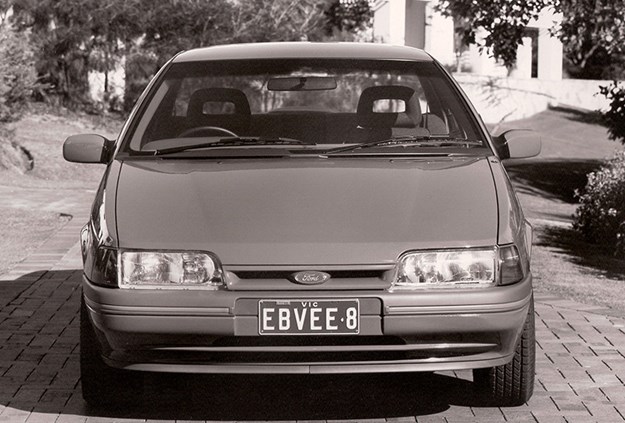
Ford’s V8 option in Australia began with the XR series Falcon in 1967 but the US-designed, Aussie made 302ci (4.9-litre) and 351 (5.8-litre) cast-iron V8s disappeared when the last Falcon V8 was built in November ’82.
It broke the lore of the Holden v Falcon legend.
| Read next: Ford Falcon V8 legends 1968-2010
To be fair to Ford, the early 1980s was an era of emerging high-tech: Most homes had a colour TV and the space-age magic of a microwave oven was the must-have kitchen thing for modern mums. The coolest birthday present a kid could hope for was a Game & Watch or an Atari… but with home computers being promoted as the future of the world many parents instead bought a Commodore Vic20 or the Aussie-made Microbee.

In car showrooms, alloy heads, electronic fuel injection – both of which Ford offered – and four cylinders and twin cams and turbos were the future. A heavy, thirsty, carburettor-fed V8 with just 149kW from its almost six litres of cast-iron cubes was regarded by most as antiquated mechanical wastage, obese and irrelevant, especially by anyone who’d had to line-up during petrol rationing just a few years earlier.
As lan Vaughan, Ford Australia’s Product Planning boss of the time, said: "The world trend is towards smaller capacity engines. Five or six litre engines are a thing of the past; obviously we had to get out of there…"
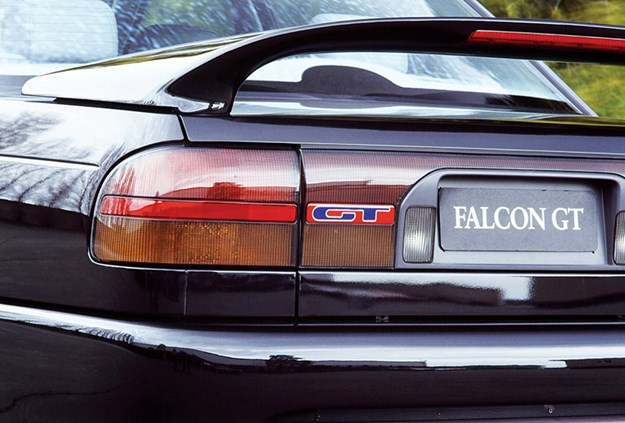
The GT badge adorned the Falcon once more, first time since the XB
But, just as hindsight now tells us Holden’s conceived-in-a-fuel crisis Commodores of the 1980s were just a little too small to be a fair-dinkum Aussie family car, that same wisdom now tells us that knowing ‘you can’t buy a Falcon V8’ in the 1980s was something of a fair-dinkum eff-up for Ford.
Ford – the company that pioneered the popular V8 - had lost its crown.
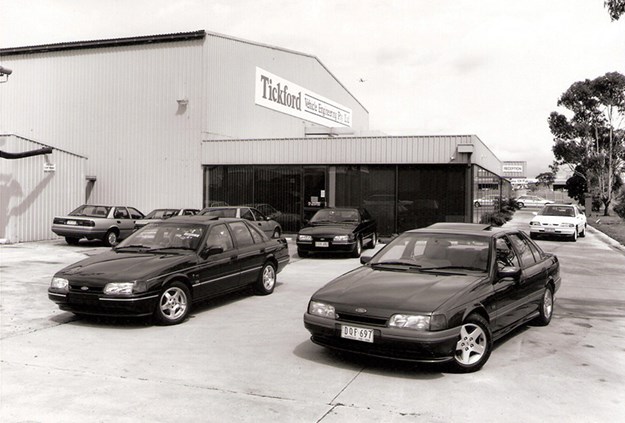
ickford’s fast Ford factory
The sales numbers told us the huge majority of Falcons and Commodores bought were six-cylinders, but V8s had somehow always added street cred – even if the actual performance didn’t. Excited by what we saw on Aussie race tracks, for many of us the coolest cars in Oz back then was a V8 Brock Commodore… An SS… closely followed by a V8 SL/E or V8 Calais. Does anyone here even remember the XF Falcon S?
The EA Falcon, launched with lots of stunning advertising and great expectations in the summer of 1988, gave its customers a choice of six-cylinder engines – a 3.2 and two 3.9s – but there wasn’t a V8.
| Read next: Ford EA Falcon 30 years on (2018)

The V8 was AWOL for a decade
In 1989, Ford Australia’s new president, Jacques Nasser, looked across the city to see what the Holden folks were up to. Melbourne-bred Jac had joined Ford Australia in 1968 so witnessed the rise and fall of the Falcon V8.
Jac saw that Holden had been busy. The VN Commodore – also launched in 1988 – was a bigger car that now matched the Falcon for size so for the first time since the ’78 Kingswood, the two foes were in a fair fight for size.
| Read next: VN Commodore vs EA Falcon
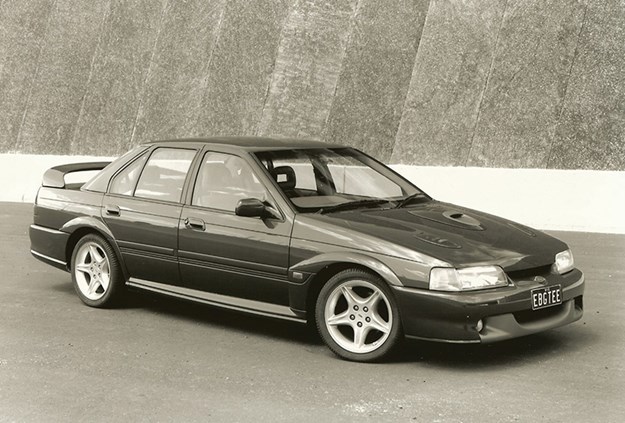
Jac also saw Holden bring out its big gun: By winter 1989, Holden had released its electronic multi-point port fuel-injected V8 and reintroduced its performance model, the Commodore SS. The new V8 was a big tech upgrade to the carby-fed V8 (that Holden thankfully didn’t kill-off in the 1980s) and the SS was a continuation of a performance icon.
Ford had neither a V8 nor a performance model (nor an equivalent to the new Holden Special Vehicles) so President Jac kick-started the development of a new Falcon V8.
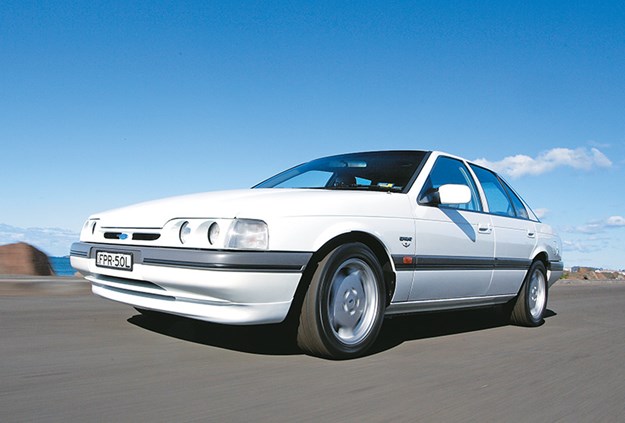
Jac’s hunch was right: It didn’t take long for Holden to be reportedly selling around 1000 VN Commodore V8s a month… around 30 V8s every day… and a total of about 12,000 more Commodores a year than Falcon. The V8 was the reason; Ford Australia needed to catch-up.
Even though the EA Falcon wasn’t planned for a V8, the inner structure – its bones – could be traced back to earlier Falcons so the idea of a V8 model wasn’t farcical. In fact, when developing the EA, we can’t help but think that Ford Australia’s hardworking engineers planned ahead just a little…

Ford Australia had two V8s available to it: the 5.0-and 5.8-litre V8s, named Windsor, used in North American models. With heritage from the 1960s (in fact, earlier versions of the Windsor V8 were used in the Aussie Falcons of the 1960s) these engines and the vehicles they powered – such as Mustang and F-series – had benefited greatly from the fresh tech of electronic fuel injection (EFI) replacing carburettors in the mid-1980s. The 5.0-litre’s capacity, physical size, output (around 168kW in Mustang) price and durability made it a possibility for the Aussie Falcon.
Thankfully, too, the EFI version had a two-piece intake manifold that allowed the upper section to point the throttle body and route the intake plumbing to either the right or the left side of the engine bay. For Falcon, this meant hardware (such as battery and air cleaner) of an intended V8 model could be shared with the six-cylinder cars, reducing production cost and complexity, in much the same way Holden had standardised the battery and air cleaner location for VN, too.
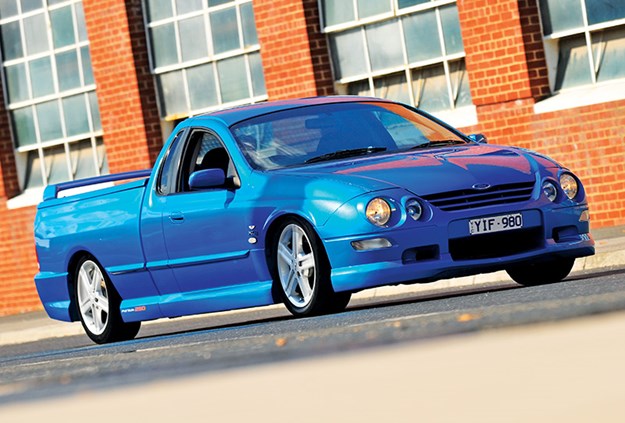
All those factors made a new Falcon V8 feasible.
But because Aussie Ford engineers were undoubtedly very busy with other stuff – such as trying to sort-out the overdue four-speed automatic transmission and fix problems with the EA Falcon’s embarrassing production quality – the development of the new Falcon V8 was fast-tracked by commissioning US-based performance/racing legend (and trusted Ford supplier) Jack Roush to assist with off-site construction of early prototypes.
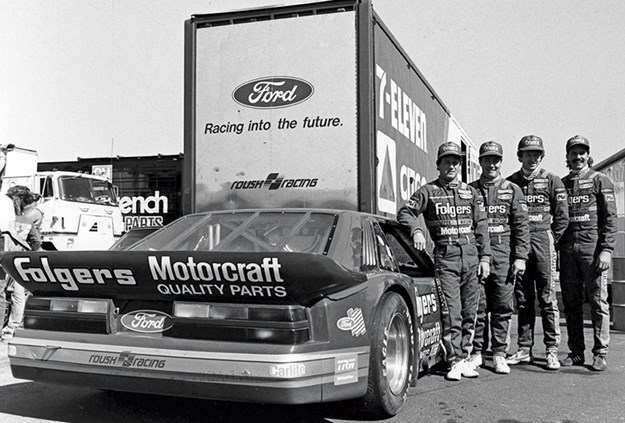
Roush played a part in V8 resurrection
Thanks to Nasser’s vision and Roush’s get-things-started input to Ford Australia’s engineering and development processes, the Falcon V8 was back in brochures in August 1991, with the introduction of the EB series.
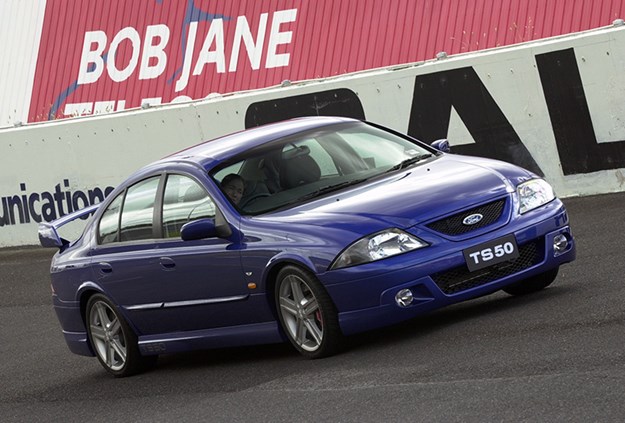
Tickford models gave Ford added street cred
Aussie roads again rumbled to the boom of a brand new Falcon V8 claiming outputs of 165kW and 388Nm against Holden’s 165/380. The two local brands performance credentials had never been so closely matched.
It was the beginning of an awesome 25-year era of Aussie performance… with plenty more to come.
Unique Cars magazine Value Guides
Sell your car for free right here
Get your monthly fix of news, reviews and stories on the greatest cars and minds in the automotive world.
Subscribe

.jpg)












